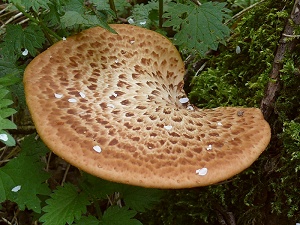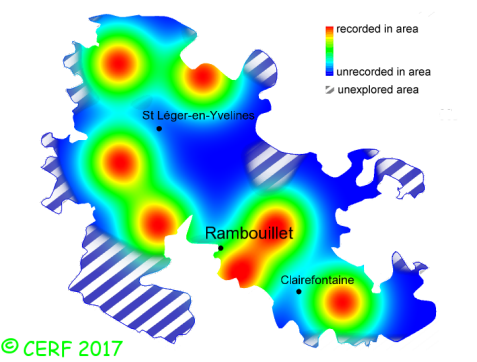| Polyporus squamosus (Huds.) Fr. |
|
|
|
|
|
|
The cap is dark brown (scales) on a creamy background, bracket-shaped or circular, fleshy then corky or leathery. The cap surface is scaly, arranged concentrically. The cap margin is regular. The stem is off-centred or lateral, tapering and blackening towards the base. The flesh is white; its taste is mealy; the odour is mealy or of honey; The tubes are 1cm long, white to creamy, slightly decurrent on stem, non removable. The pores are large (one or two pores per mm), angular, white then yellowish. The spore print is white. It grows in parks, on various broad-leaved trees (parasite or saprophyte), on elm, beech, ash, sycamore, walnut, chestnut. The fruiting period takes place from March to November.
Distinctive features : circular or bracket-shaped, dark brown scales on creamy background; white, lateral or off-centred stem, darkening to black from the base up; white pores, large and angular; on deciduous trees Polyporus squamosus is quite rare and scattered in the forest of Rambouillet, and is frequent, more generally speaking . | ||
|
page updated on 14/01/18

